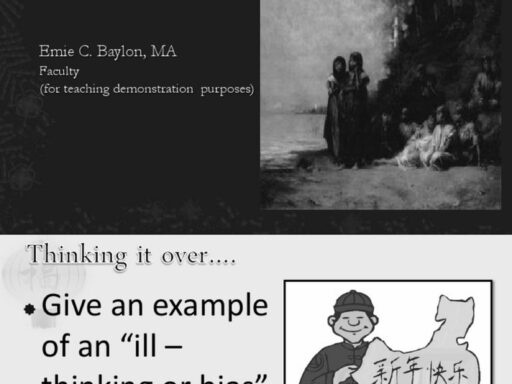The Blitz was a failure for Germany due to multiple tactical, technical, and strategic shortcomings. German bombers suffered heavy losses, limiting their operational effectiveness. British defenses, including the Dowding radar system and robust public morale, reduced the intended impact. Moreover, the Luftwaffe was not designed for prolonged strategic bombing, affecting damage and outcomes.

German bombers faced severe vulnerabilities. Contrary to interwar predictions that bombers would “always get through,” German bombers took substantial losses, even with fighter escorts. Their two-engine designs traded payload capacity for speed, but this speed was insufficient to evade British fighters. The bombers had weak defensive armament, making them easy targets. For example, the German “schnellbomber” concept prioritized speed over protection, leaving crews exposed.
Navigation and bombing accuracy further hampered raids. Daytime navigation posed challenges, while night raids were especially difficult, reducing bombing precision. Hitting specific industrial or military targets was almost accidental. This inaccuracy hindered strategic goals such as crippling British aircraft production or port facilities.

Germany’s reliance on dive-bombing proved effective in earlier campaigns in Poland and France but was less useful during The Blitz. English weather and air defenses negated its advantages, making dive-bombing a liability.
Another major factor was the limited range of German fighter escorts. Their fighters had only minutes of fuel once reaching London, minimizing effective protection for bombers on deep raids. This limitation allowed RAF fighters to exploit opportunities to intercept and shoot down bombers with relative success.

The British defensive system played a crucial role in blunting German efforts. The Dowding System integrated radar, visual and audio observation posts, and communications to optimize fighter deployment. This network allowed the RAF to respond rapidly and effectively to incoming raids, preserving air superiority despite heavy pressure.
Meanwhile, British morale proved unexpectedly strong. Instead of breaking, the population in London and across Britain unified. The bombings, intended to force capitulation, strengthened national resolve and total war commitment. The public shared the sacrifice, supporting government and military efforts.

This resilience relieved some pressures on British supply chains and RAF logistics. With public support and efficient command, the RAF regained breathing space to recover and rearm after initial heavy losses. RAF fighters like the Spitfire were largely kept for defense until 1942, underscoring how The Blitz pinned British air efforts defensively.
The Luftwaffe itself was ill-suited for strategic bombing. It excelled in fast, tactical campaigns on continental Europe but struggled with the sustained pressure and precision needed in bombing Britain’s cities and industry. The German air force’s equipment and doctrine were not optimized for prolonged air warfare of this kind.

Economically and strategically, The Blitz failed to achieve intended results. Damage to Britain’s infrastructure and economy was relatively minor. The Germans aimed to destroy ports and aircraft industries to enforce a blockade and weaken the RAF. Instead, the British economy endured with limited disruption.
Strategically, The Blitz helped Germany focus attention on Britain’s defense, allowing preparations for Operation Barbarossa to proceed largely unhindered in 1941. Pinning British air forces defensively resulted in a cautious RAF posture but did not decisively weaken Britain’s war capacity.
| Reasons for Failure | Details |
|---|---|
| Bomber Vulnerability | High losses; weak armament; limited speed and altitude |
| Limited Bomber Payload & Accuracy | Small bomb loads; difficult navigation; poor target precision |
| Short-range Fighter Escorts | Minimal coverage over London; exposed bombers to RAF attack |
| British Defensive Systems | Dowding radar and communication network optimized fighter responses |
| Resilient British Morale | Population unified and supported war efforts despite bombing |
| Luftwaffe’s Strategic Unsuitability | Designed for fast tactical campaigns, not prolonged bombing |
| Limited Economic Impact | British economy remained largely intact |
- German bombers were vulnerable and carried limited payloads.
- Challenges with navigational accuracy limited bombing effectiveness.
- Fighter escort range constraints left bombers exposed.
- British radar and communication systems enhanced fighter defense efficiency.
- British public morale remained strong, facilitating perseverance.
- The Luftwaffe was not equipped for sustained strategic bombing.
- The Blitz caused limited economic and strategic damage to Britain.
Why Was ‘The Blitz’ a Failure for Germany?
The Blitz, the German bombing campaign against Britain in 1940-41, ultimately failed for Germany due to a mix of technical limitations, strategic missteps, and unexpectedly fierce British resistance. Despite initial beliefs that relentless bombing would break British morale and cripple their war effort, the campaign barely dented Britain’s resolve or economy. Let’s unpack why this failure happened.
The German Luftwaffe appeared to be the perfect weapon to bring Britain to its knees—fast bombers and precise dive-bombing tactics—but reality painted a very different picture. It wasn’t just about dropping bombs; it was about how and whether those bombs could even reach and damage critical targets.
1. Vulnerabilities and Limitations of German Bombers
German bombers, although designed for speed, lacked several key advantages. They were not fast enough to evade British fighters. The concept of schnellbomber (fast bombers) promised they could “always get through,” but this was overly optimistic.
Even with fighter escorts, bombers suffered moderate to heavy losses. Without escorts, they were sitting ducks. The bombers didn’t fly higher or faster than the defenders, making them easy targets.
Moreover, their payload was limited. These twin-engine bombers couldn’t carry heavy bombs, reducing destructive potential. Accuracy was another thorn in the Luftwaffe’s side. Night navigation was nearly impossible, so hitting a city was challenging; hitting individual factories? Nearly miraculous.
For example, the dive-bombing tactics that worked wonders in Poland and France failed over Britain, where pilots faced stronger defenses and unpredictable weather conditions. The Luftwaffe’s dedication to dive-bombing proved a liability rather than an asset.
2. Fighter Escort and Range Limitations Hampered Effectiveness
On paper, fighter escorts should have protected German bombers, but limited fuel range severely restricted their time over Britain. German fighters had just minutes once they reached London before needing to return home.
This squeezed the protection bubble tight, forcing bomber formations to face British fighters alone for extended periods. The advantage shifted to the RAF, able to scramble defenders efficiently due to radar and communication improvements.
3. The British Defensive Advantage: Dowding System and Morale
The British had a secret weapon beyond Spitfires and Hurricanes—the Dowding System. This integrated radar, visual and audio observation posts, and fast communication. It was like a video game with cheat codes, directing fighters precisely where they were needed.
The system maximized limited RAF resources, ensuring no British fighters wasted time or fuel chasing ghosts. German bombers walked into well-prepared defenses every time.
As if technology weren’t enough, British morale proved rock-solid. Contrary to interwar theorists who expected bombing to break civilian spirit, it didn’t. Instead, the Blitz unified Londoners like never before.
“The RAF was on the brink of collapse, but then Hitler decided to deliver a moral blow to Britain. The actual effect? Londoners rallied, united, and committed to total war, sharing the burden together.” This dramatic shift strengthened home front defenses and kept industrial output stable.
This communal spirit lightened pressure on RAF logistics and supply chains. The steady flow of pilots, planes, and munitions gave Britain critical breathing space.
4. Strategic Unsuitability of the Luftwaffe
The Luftwaffe was built for swift, tactical strikes supporting blitzkrieg on the continent. But strategic bombing, where the goal is to break an enemy’s industrial and civilian base over time, was a different beast.
The lack of heavy bombers with long range and significant payloads hampered Germany’s strategic bombing ambitions. Instead of crippling Britain’s war machine, they just irritated it.
5. Limited Economic and Strategic Impact
The economic damage inflicted by the Blitz was modest compared to what the Luftwaffe expected. Although ports and aircraft factories were targeted, destruction was patchy and quickly repaired.
Additionally, the Blitz pinned British forces in defense, forcing the RAF to hold back its best aircraft, like the Spitfire, at home until 1942. This allowed Germany to plan Operation Barbarossa with fewer concerns about the Western front’s air threat.
Historian Richard Overy summarizes: “German Air Force claims were right in a way—Britain’s offensive war potential was reduced in 1940 and 1941 due to bombing and fear of its return.” But this was a defensive victory, not a knockout blow.
What Can We Learn?
The Blitz was a classic case of overestimating technology and underestimating human resilience. German planners assumed bombers were unstoppable and that terror bombing would shatter willpower. Instead, it exposed the Luftwaffe’s limits and the British people’s determination.
Can modern strategies learn from this? Absolutely. Precision, adaptability, and comprehensive defense dare to challenge blitzkrieg-like confidence. No matter the weaponry, morale and efficient systems often tip the scales.
So next time you hear “The Blitz,” remember—it wasn’t just a bombing campaign; it was a struggle between flawed tactics and steadfast courage. And courage won.




